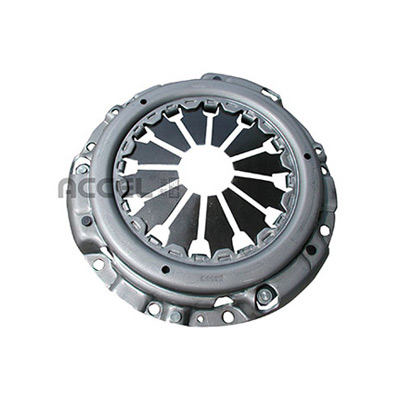- Arabic
- French
- Russian
- Spanish
- Portuguese
- Turkish
- Armenian
- English
- Albanian
- Amharic
- Azerbaijani
- Basque
- Belarusian
- Bengali
- Bosnian
- Bulgarian
- Catalan
- Cebuano
- Corsican
- Croatian
- Czech
- Danish
- Dutch
- Afrikaans
- Esperanto
- Estonian
- Finnish
- Frisian
- Galician
- Georgian
- German
- Greek
- Gujarati
- Haitian Creole
- hausa
- hawaiian
- Hebrew
- Hindi
- Miao
- Hungarian
- Icelandic
- igbo
- Indonesian
- irish
- Italian
- Japanese
- Javanese
- Kannada
- kazakh
- Khmer
- Rwandese
- Korean
- Kurdish
- Kyrgyz
- Lao
- Latin
- Latvian
- Lithuanian
- Luxembourgish
- Macedonian
- Malgashi
- Malay
- Malayalam
- Maltese
- Maori
- Marathi
- Mongolian
- Myanmar
- Nepali
- Norwegian
- Norwegian
- Occitan
- Pashto
- Persian
- Polish
- Punjabi
- Romanian
- Samoan
- Scottish Gaelic
- Serbian
- Sesotho
- Shona
- Sindhi
- Sinhala
- Slovak
- Slovenian
- Somali
- Sundanese
- Swahili
- Swedish
- Tagalog
- Tajik
- Tamil
- Tatar
- Telugu
- Thai
- Turkmen
- Ukrainian
- Urdu
- Uighur
- Uzbek
- Vietnamese
- Welsh
- Bantu
- Yiddish
- Yoruba
- Zulu
იან . 01, 2025 06:22 Back to list
Optimizing Performance with Multi-Speed Belt Technology for Enhanced Efficiency
The Multi-Speed Belt Revolutionizing Industrial Efficiency
In today's fast-paced industrial environment, efficiency and adaptability stand as pillars of competitiveness. One innovation that has emerged to meet these challenges is the multi-speed belt system. This technology not only enhances operational efficiency but also provides a flexible solution for various manufacturing processes. As industries strive for better performance, understanding the mechanics and benefits of multi-speed belts becomes essential.
What is a Multi-Speed Belt?
A multi-speed belt is a specialized conveyor system designed to operate at varying speeds. Unlike traditional belts that maintain a constant speed, multi-speed belts adjust according to the specific requirements of the task at hand. This adaptability allows for optimized handling of materials, enabling smoother transitions between different process stages and reducing downtime.
These belts are commonly used in manufacturing, packaging, and distribution sectors, where the flow of materials must be precisely controlled. By allowing for varied speeds, multi-speed belts help in managing diverse operations, from slow-moving assembly lines to high-velocity sorting systems.
How Multi-Speed Belts Work
The functionality of a multi-speed belt system relies on its advanced drive mechanism. Generally, these systems incorporate variable frequency drives (VFDs) or servo motors that enable real-time adjustments to the belt's speed. This means that operators can easily switch speeds depending on the specific requirements of a production schedule, whether it involves accelerating to match incoming materials or slowing down to facilitate assembly tasks.
Moreover, many multi-speed belts are equipped with advanced sensors that monitor the speed, load, and direction of materials. This data is used to automatically adjust the belt speed, ensuring optimal performance and minimizing the risk of bottlenecks. Such automation also contributes to reduced strain on machinery, prolonging the lifespan of the equipment.
Benefits of Multi-Speed Belts
1. Increased Efficiency Multi-speed belts significantly improve workflow efficiency. They enable a seamless transition of materials between different stages of production, reducing wasted time and effort.
multi speed belt

2. Flexibility With the ability to adjust speeds on-demand, companies can easily adapt their production lines to meet fluctuating market demands. This flexibility is crucial for industries facing unpredictable changes in order volumes.
3. Enhanced Productivity By optimizing the speed at which materials are moved, businesses can enhance overall productivity. Workers can focus on critical tasks without interruptions, leading to a more streamlined operation.
4. Energy Savings Multi-speed belts can operate at lower speeds when full capacity isn’t necessary, resulting in reduced energy consumption. This not only cuts operational costs but also assists companies in their sustainability initiatives.
5. Reduced Wear and Tear By adjusting speeds to match specific tasks, multi-speed belts reduce the stress and wear experienced by machinery. This can lead to lower maintenance costs and longer equipment lifespans.
Applications in Various Industries
The versatility of multi-speed belts makes them suitable across a range of sectors. In the food and beverage industry, for instance, they can help in efficiently transporting items through packaging lines at different speeds, ensuring freshness is maintained. In the automotive sector, these belts assist in aligning parts for assembly, adapting speeds to handle various components as required.
Additionally, in the e-commerce space, multi-speed belts are invaluable for sorting and packaging processes. They can accommodate the rapid movement of packages while adjusting to the varying sizes and weights being processed, thus ensuring efficiency in order fulfillment.
Conclusion
Multi-speed belt systems represent a significant advancement in manufacturing and logistics technology. By offering flexibility, enhanced productivity, and considerable energy savings, they are revolutionizing the way industries operate. As businesses continue to seek solutions that promote efficiency and adaptability in their operations, the implementation of multi-speed belts will likely become increasingly prevalent, paving the way for a more productive and sustainable industrial future. Adopting such innovations is not just a trend; it's a strategic move towards achieving operational excellence in an ever-evolving market landscape.
-
Korean Auto Parts Timing Belt 24312-37500 For Hyundai/Kia
NewsMar.07,2025
-
7PK2300 90916-T2024 RIBBED BELT POLY V BELT PK BELT
NewsMar.07,2025
-
Chinese Auto Belt Factory 310-2M-22 For BMW/Mercedes-Benz
NewsMar.07,2025
-
Chinese Auto Belt Factory 310-2M-22 For BMW/Mercedes-Benz
NewsMar.07,2025
-
90916-02660 PK Belt 6PK1680 For Toyota
NewsMar.07,2025
-
drive belt serpentine belt
NewsMar.07,2025

